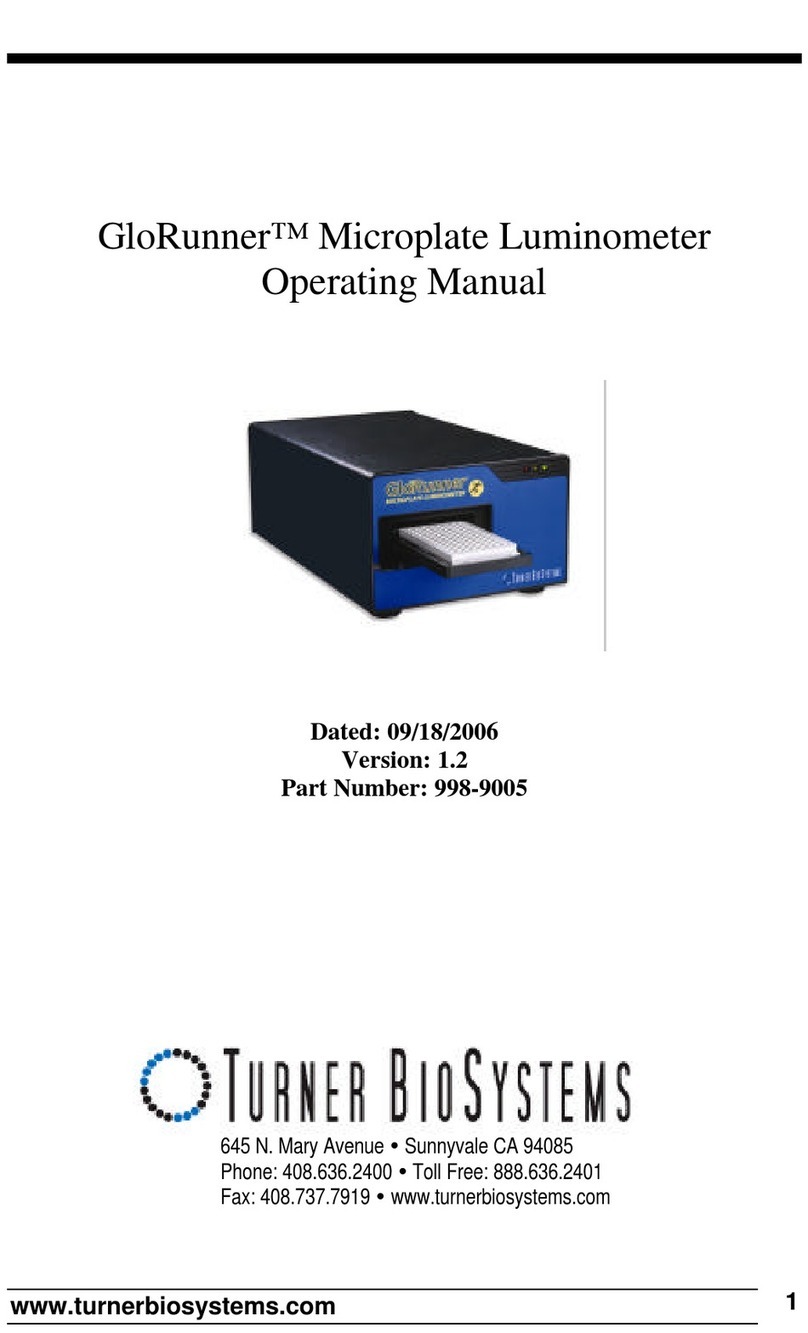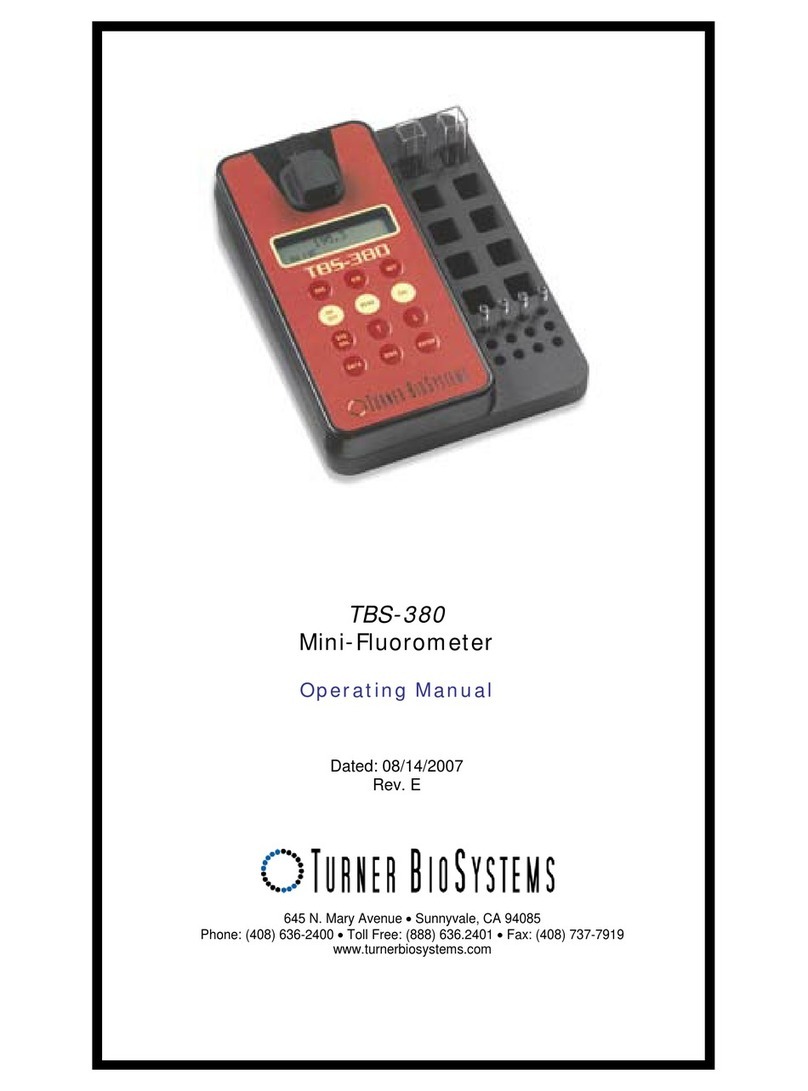
www.turnerbiosystems.com 1 Version 1.5
Table of Contents
1Introduction ....................................................................................................................................2
1.1 Description .....................................................................................................................................2
1.2 General Information and Precautions.................................................................... 2
1.3 LCD...................................................................................................................................................2
1.4 Inspection.......................................................................................................................................2
1.5 Setup................................................................................................................................................2
2Quick View Diagrams..................................................................................................................... 3
3Instrument Workflow .....................................................................................................................4
4Instrument Calibration and Operation .........................................................................................6
4.1 Instrument Power Up..................................................................................................................6
4.2LCD...................................................................................................................................................6
4.3Detection Channel Configuration............................................................................................6
4.4Calibration Overview...................................................................................................................6
4.5Calibration ......................................................................................................................................7
4.6Setting Calibration Standard Value........................................................................................7
4.7Performing the Calibration ........................................................................................................7
4.8Sample Analysis...........................................................................................................................7
4.9Diagnostic Information................................................................................................................8
5Internal Data Logging (IDL)...........................................................................................................9
5.1 To activate the IDL.......................................................................................................................9
5.2 Download Data .............................................................................................................................9
5.3 Erase Data .....................................................................................................................................9
6General Considerations for Analysis.........................................................................................10
6.1 Handling Samples......................................................................................................................10
6.2 Linear Range and Quenching................................................................................................10
6.3 Temperature Considerations..................................................................................................10
6.4 Positioning Samples..................................................................................................................11
6.5 Data Quality.................................................................................................................................11
7Warranty........................................................................................................................................12
7.1 Terms.............................................................................................................................................12
7.2 Warranty Service........................................................................................................................12
7.3 Out-of-Warranty Service..........................................................................................................13
APPENDIX A Instrument Specifications..............................................................................................14
A.1 General Specifications .............................................................................................................14
A.2 Optical Specifications ...............................................................................................................14
APPENDIX B Internal Datalogging .......................................................................................................15
B.1 Shipping Checklist.....................................................................................................................15
B.2 Hardware Requirements..........................................................................................................15
B.3 Installation ....................................................................................................................................15
B.4 Connecting...................................................................................................................................15
B.5 Troubleshooting..........................................................................................................................15





























